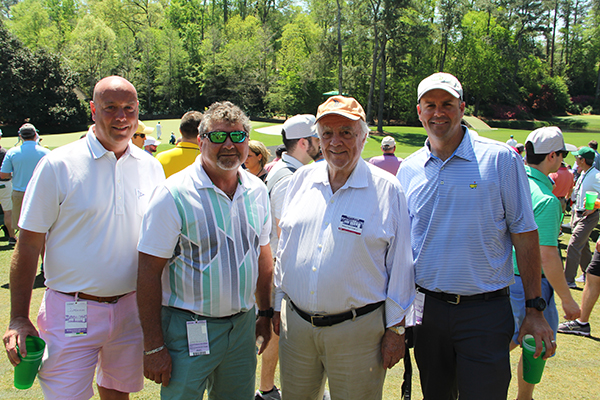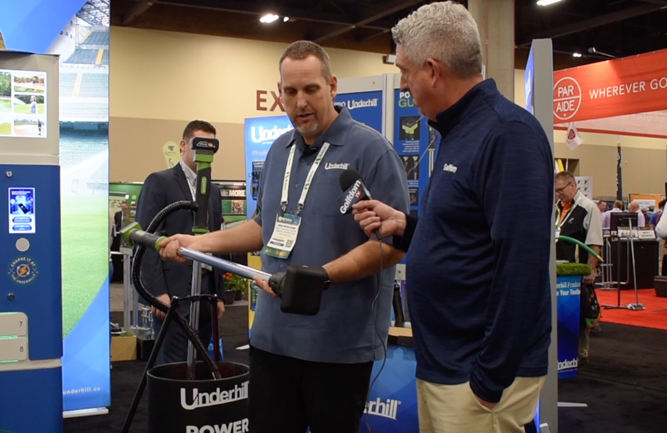RTJ2 tells early tales of Augusta National

Left to right: Rich Sweeney, Plant Food Co.; Ricky Reeves, superintendent, Miami Beach GC; Robert Trent Jones II, ASGCA; and Nate Watkin, superintendent at Seagate CC, Delray Beach, Fla., smile for a photo together on Amen Corner at Augusta National. (Photo: Seth Jones)
Augusta National is a place where golf magic just tends to happen. One of those magical moments happened for me on Wednesday afternoon, hanging out with a group of friends near the No. 12 tee.
I looked over to my left, and there was Robert Trent Jones II hanging out just a few feet away from me. I grabbed my group and said, “let’s go say hi.”
I introduced myself to Mr. Jones (we’ve spoken a few times before) and told him I had some golf course superintendents with me I wanted to introduce him to. I then introduced our group — Nate Watkin, superintendent at Seagate CC, Delray Beach, Fla., Ricky Reeves, superintendent at Miami Beach GC, and Rich Sweeney of the Plant Food Co.
With a little prompting, Mr. Jones went into story mode and started telling us about how the invention of the sand wedge — which he credited to Gene Sarazen modifying the niblick — caused Bobby Jones to seek out the advice of Robert Trent Jones on how to make Amen Corner more challenging.
Robert Trent Jones suggested modifying the course by adding in more water, utilizing Rae’s Creek. It was an idea that Bobby Jones, “pondered, approved and then ordered done.” So Mr. Jones’ father and construction crew went to work.
“So they put this pond in on 11, which is what they call a bypass pond — it’s not natural. The water comes out of Rae’s Creek and back through … it’s not of Rae’s Creek, it’s next to Rae’s Creek,” RTJII told us. Now the hole had both bunkers and water to make it more challenging. “(Bobby) Jones said this is the difference between a car crash and an airplane crash. A bunker is a car crash from which you can recover … a pond is an airplane crash from which there is no recovery.”
RTJII said that it was at this moment that the back nine at Augusta National became ‘watery.’
“It’s the parkland style of golf, which really is what Augusta is,” RTJII said. “It’s the paradigm of the American interpretation of links style. Ponds are the American basic concept difference, and that’s where it happened.”
RTJII said that while these changes were happening, they also moved the green on No. 13 behind Rae’s Creek — the original layout had the green in front of the water. A problem arose with No. 16, as shots into the green were repetitive on No. 15 and No. 16. So, Robert Trent Jones suggested turning the hole on its axis and made it horizontal to the way it’s played today. The original No. 16 played to a green that is where the gallery sits today.
“He put the pond in on No. 16. Rae’s Creek runs under the pond; it does not in any way feed the pond,” RTJII said. “The way the family story goes, my dad was here in August, 1948 or 1949, with a shaper by the name of Bill Baldwin, who was shaping the pond. He got it roughed out in the dirt, built in a little dam, then a big storm came up.
“They all raced to the clubhouse in order to play some cards and wait out the storm, including the bulldozer operator,” RTJII continued. “When they came back down, the pond had filled itself with rain, and the bulldozer was at the bottom (of the pond) … and some say it’s still there.”












Dylan Dethier From Williamstown. MA also received the GWAA ‘ Best News Story Award’. Williamstown is home to 2 of the Commonwealth’s best courses, Taconic Golf Club and Waubeeka Golf Links. Worth the trip!